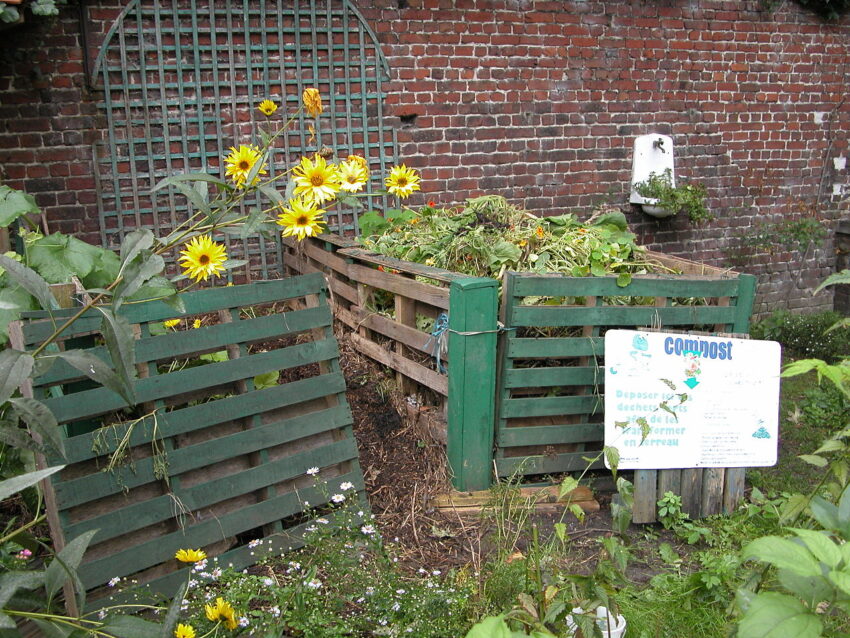A Guide to Natural Lawn and Garden Care
To combat the negative effects of manmade fertilizers, more people are turning to organic fertilizers. But what is organic fertilizer, and how do you use it? Learn about the different types available and learn how to use them to care for your lawn and garden.
Understanding Organic Fertilizer
Fertilizer is categorized as either organic or synthetic. Organic fertilizers are natural and synthetic fertilizers are manmade or inorganic compounds.
Before you decide which type to use, it’s important to understand the differences between organic and synthetic fertilizers and the environmental impacts associated with each type.
Definition and Benefits of Organic Fertilizer
Organic fertilizers occur naturally, and unlike synthetic fertilizers, humans play a small part in processing them for use on lawns and gardens.
Compared to synthetic fertilizers, organic lawn fertilizers are environmentally friendly. Organic fertilizers may cost more, but they improve the structure and health of your soil, and they reduce the amount of waste that goes into our landfills.
Organic vs. Synthetic Fertilizer
Strictly speaking, organic and synthetic fertilizers are soil amendments that are added to the soil to support plant growth. However, synthetic fertilizers don’t improve the soil or its structure, so they aren’t always classified as soil amendments.
Organic Fertilizer
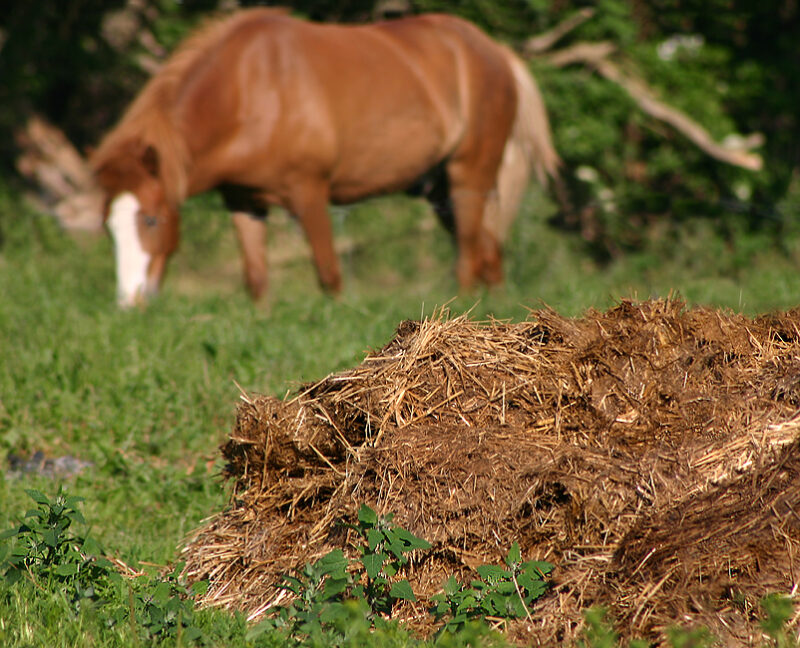
Naturally occurring soil amendments like compost and manure add organic matter to your soil. They provide a slow release of nutrients and contain trace minerals that synthetic fertilizers do not.
By improving the structure and health of your soil, organic fertilizers support the microorganisms in the ground.
Synthetic Fertilizer
Synthetic fertilizers are manmade chemical products. They usually contain a combination of nitrogen, phosphorus, and potassium that is immediately available to plants so they will grow.
Synthetic fertilizers only focus on plant growth rather than improving the structure of the soil, and they can kill beneficial microbes and destroy the food web in the soil.
Environmental Impact of Organic Fertilizer
Lawns are heavy feeders, and with the constant application of synthetic fertilizers, chemical nutrients are destroying the microbes in the soil and leaching into the groundwater.
Healthy soil should teem with microscopic life.
Organic lawn fertilizers help aerate the soil and support the beneficial microorganisms in the soil food web. Microbes like bacteria, fungi, and protozoa, as well as organisms like earthworms and nematodes, thrive in soils rich in organic matter.
The organisms in your soil break down organic fertilizers over time and slowly make nutrients available to your plants, which helps maintain balanced soil pH levels. When you use organic fertilizer for lawns, you can avoid synthetic fertilizers altogether.
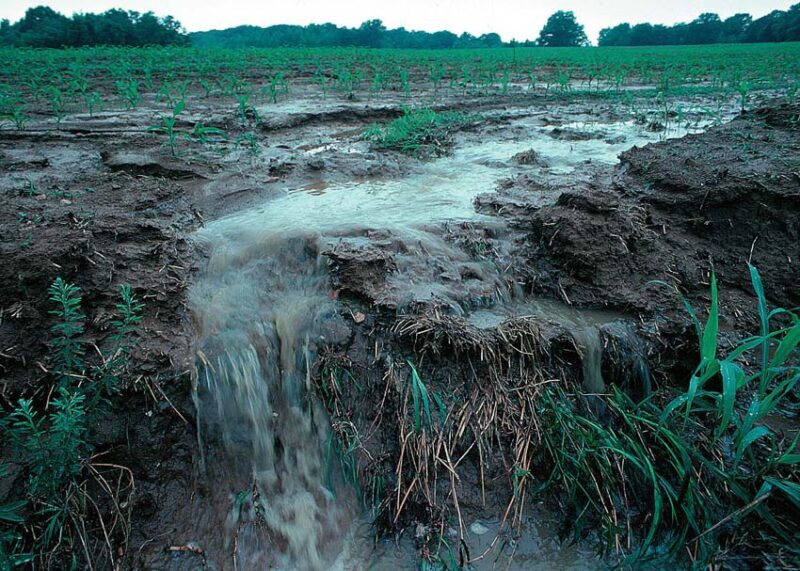
Synthetic fertilizers present environmental dangers, including soil degradation, depletion, and erosion. Furthermore, they pollute lakes, rivers, and streams, causing algal blooms that result in dead zones.
Intensive agriculture has depleted the soil in countries worldwide, threatening food supplies and ecosystems. Global leaders have cautioned that soil loss will have catastrophic consequences in the 21st century, which is why people are looking everywhere to find ways to make fertilizer to meet global demands.
Since organic fertilizers support the structure of soils, they are a better long-term solution than synthetic fertilizers, and you can do your part to support the environment by using them on your lawn.
What is Organic Fertilizer Made Of?
There is a wide range of different types of organic fertilizers. They include everything from a pile of manure to a bottle of seaweed emulsion.
Common Ingredients in Organic Fertilizers
Organic fertilizers contain many different ingredients. They can come from plants, animal waste, and minerals.
- Animal manure or guano–You can obtain manure from local farms or purchase it as bags of pellets or granules.
- Compost–You can make compost at home or commercially from leaves, twigs, bark, manure, and food waste.
- Waste from food processing–Plant and animal waste, including bone meal, blood meal, and fish emulsion.
- Minerals–Ground or powdered glacial and basalt rock, calcium carbonate, gypsum, phosphorus, and soft rock phosphate.
- Seaweed fertilizers–Popular in the 1700-1800s, seaweed has seen renewed interest as a fertilizer. It is available in powder, pellet, liquid, and extract forms.
- Sewage sludge and biosolids–Municipalities strictly monitor this type of waste the world over to ensure safe, nonpathogenic use, sometimes in granular form.
- Worm castings–Vermicomposting with earthworms turns industrial food waste into organic fertilizer.
Nutrient Composition
Plants and soil organisms need many types of nutrients, including:
- Macronutrients–The building blocks of molecules, which are carbon, hydrogen, and oxygen.
- Primary nutrients–The major nutrients supplied by chemical fertilizers, including nitrogen, phosphorus, and potassium. These are the first nutrients depleted in soils used for intensive agriculture and growing lawns.
- Secondary nutrients–Necessary for plant growth but required in smaller quantities than primary nutrients, including calcium, magnesium, and sulfur.
- Micronutrients–The elements plants need in minute amounts, including boron, copper, iron, molybdenum, zinc, chlorine, and manganese.
The N-P-K ratio is used to describe the percentage of nitrogen (N), phosphorus (P), and potassium (K) that fertilizers contain. Since plants need other nutrients, synthetic fertilizers fall short of providing everything a plant needs.
Healthy soils fertilized with organic materials will have all of these nutrients, while synthetically fertilized soils will become depleted. Even though organic fertilizers have an N-P-K ratio smaller than synthetic fertilizers, they have other important nutrients.
And because they support the microorganisms in the soil, they help make nutrients readily available to plants.
Synthetic fertilizers can easily burn your lawn or garden plants if you overuse them. With organic fertilizers, burning plants with too much nitrogen is almost impossible.
Another drawback to synthetic fertilizers is that you have to reapply them frequently, unlike organic fertilizers, which deliver nutrients slowly and benefit the soil for a long time.
What to Expect with Nutrient Composition and Release Rates
The problem with organic lawn fertilizers is that their nutrient composition and release rates vary widely, making it difficult for homeowners to judge application rates.
Knowing what to expect when applying synthetic fertilizers is much easier. Here are some common types of organic fertilizer and their N-P-K ratios:
| Organic fertilizer | N-P-K |
| Chicken manure | 1.1-0.8-0.5 |
| Cow manure | 0.6-0.4-0.5 |
| Compost | 1.5-0.5-1.0 |
| Pig manure | 0.8-0.7-0.5 |
| Sheep manure | 0.7-0.3-0.9 |
| Rabbit manure | 2.4-1.4-0.6 |
| Fish and seaweed emulsion | 2-3-1 |
| Milorganite (made from microbes used to treat sewage) | 5-2-0.32 |
The Role of Soil Microorganisms in Organic Fertilizers
The role of microbes is to break down organic matter in the soil and make nutrients readily available to plants.
The molecules in synthetic fertilizers do not contain carbon, making them disruptive to the microorganisms in the soil. Without important macronutrients, microbial life stops.
On the other hand, organic fertilizers are rich in carbon, nitrogen, phosphorus, and potassium, which support microbial activity and benefit plants. They help balance out the soil pH levels and nurture the health of the soil and plants.
The Best Organic Fertilizers
The best organic fertilizers are manure and compost.
Raw manure is readily available in rural areas and is an excellent organic fertilizer for lawns. Urban and city dwellers can purchase bagged manure and compost at lawn and garden centers, and they are easy to apply.
As demand for organic fertilizers has increased, so has their availability. It’s easy to find organic fertilizer in many forms locally and online.
Top Organic Fertilizer Brands and Products
Eco-forward companies are taking the initiative to produce green products and research ways to make organic fertilizers more accessible to everyone. Look for quality products from brands like Jobe’s, Dr. Earth, Kellogg, Milorganite, Burpee’s, and Espoma for all your fertilizer needs.
Here are some of the top organic fertilizer products available:
Best organic fertilizer for lawns
Espoma Organic Lawn Booster Fertilizer
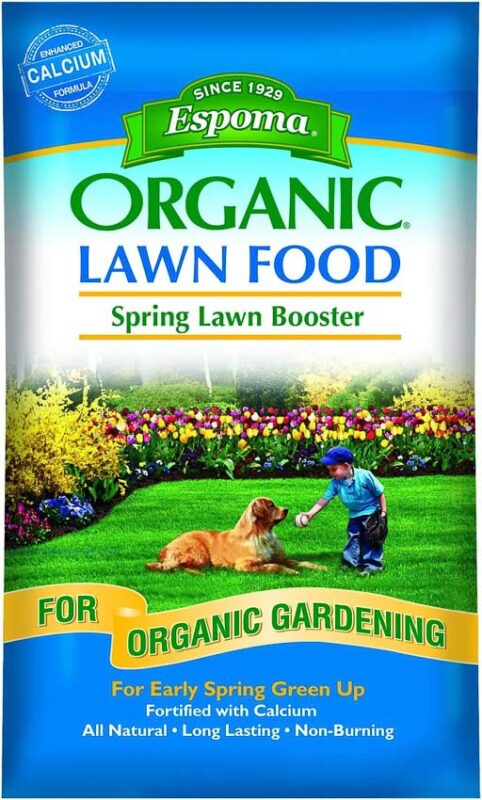
Best organic fertilizer for vegetables and herbs
Dr. Earth Home Grown Tomato
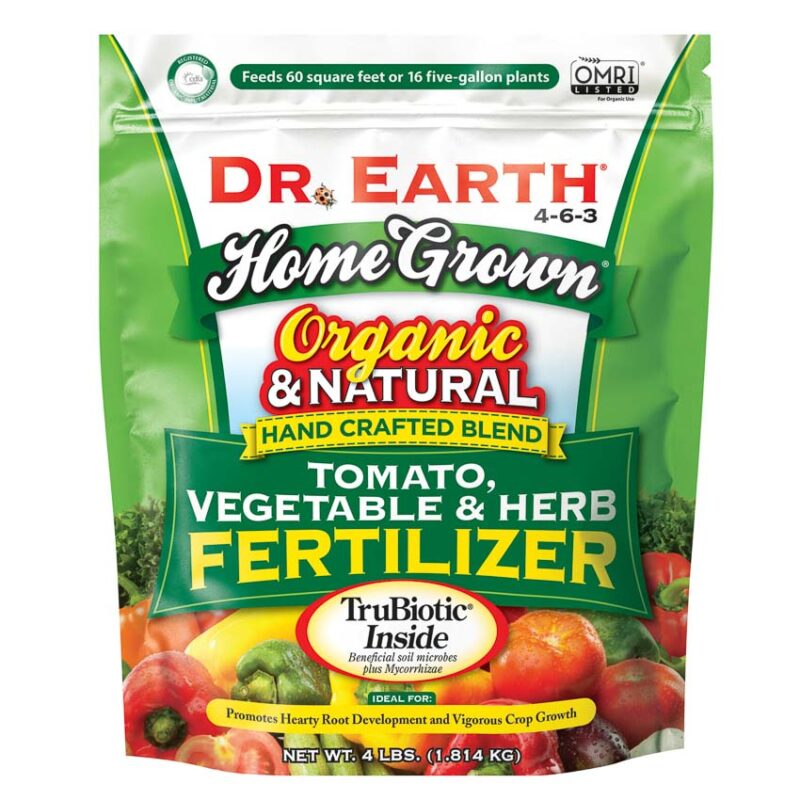
Best organic fertilizer for flowers
Espoma Organic Flower Tone 3-4-5
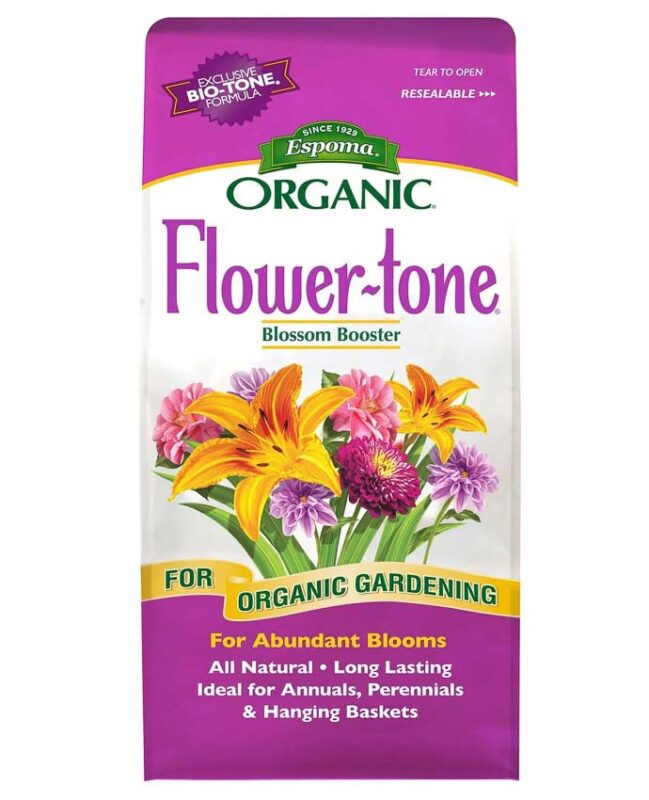
Best organic fertilizer for plants of all kinds
Jobe’s Organic All-Purpose Granular Fertilizer
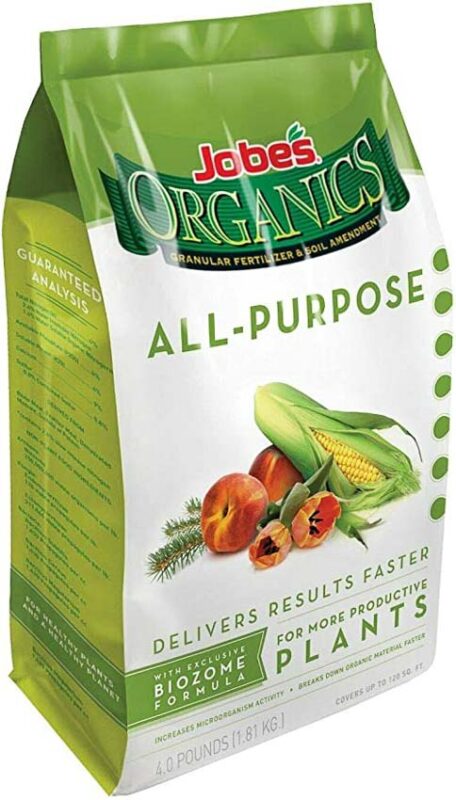
Granular vs. Liquid Organic Fertilizers
The main differences between granular and liquid fertilizers are their application methods and how long they last. Both liquid and granular organic fertilizers are easy to apply, but granular fertilizers are slower to release, which requires less frequent application.
Liquid
Liquid organic fertilizers like GS Plant Foods Organic Fish and Kelp Blend are emulsions that make nutrients immediately available to plants. With an N-P-K of 2-3-1, it’s a little higher than other organic fertilizers but balanced enough for a variety of uses.
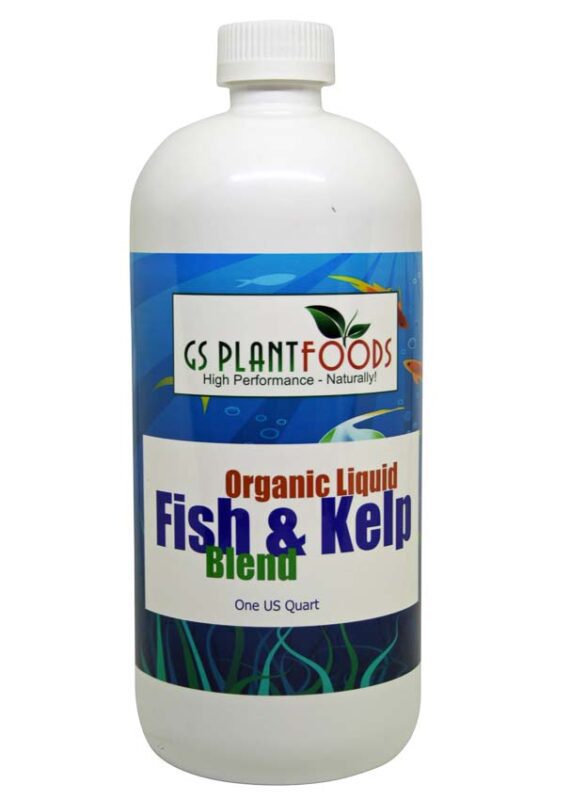
Fertilome Fish Emulsion Fertilizer has a nutrient ratio of 5-1-1 and is perfect for greening up your lawn in the spring.
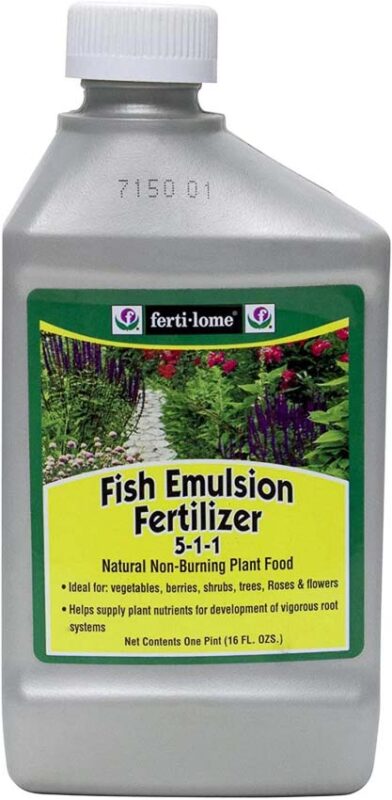
Granular
The effects of liquid organic fertilizers are not as long-lasting as granular organic fertilizers, but they are easy to apply. They come in concentrated form in various-sized containers, from 1 quart to 55 gallons.
You can easily apply liquid organic fertilizers to your lawn or flower beds with a self-mixing water hose-end sprayer. See the product label for suggested dilution rates and hose end sprayer settings. It also helps to water before applying fish emulsion.

Granular fertilizers like Milorganite Slow-Release Nitrogen Lawn Fertilizer come in 32-pound bags and are easy to apply with a broadcast spreader. Manufactured in Wisconsin, this fertilizer is widely available.
Milorganite is made from the dried microbes that treat sewage, and although it is 85% organic, it can’t be used on certified organic farms. The N-P-K ratio of Milorganite is 5-2-0.32, and it contains many secondary and micronutrients as well.
Another top choice is Burpee’s Natural Purpose Granular Food, which has a balanced nutrient ratio of 4-4-4. It is easy to spread, is highly absorbent, and works great for container gardening.
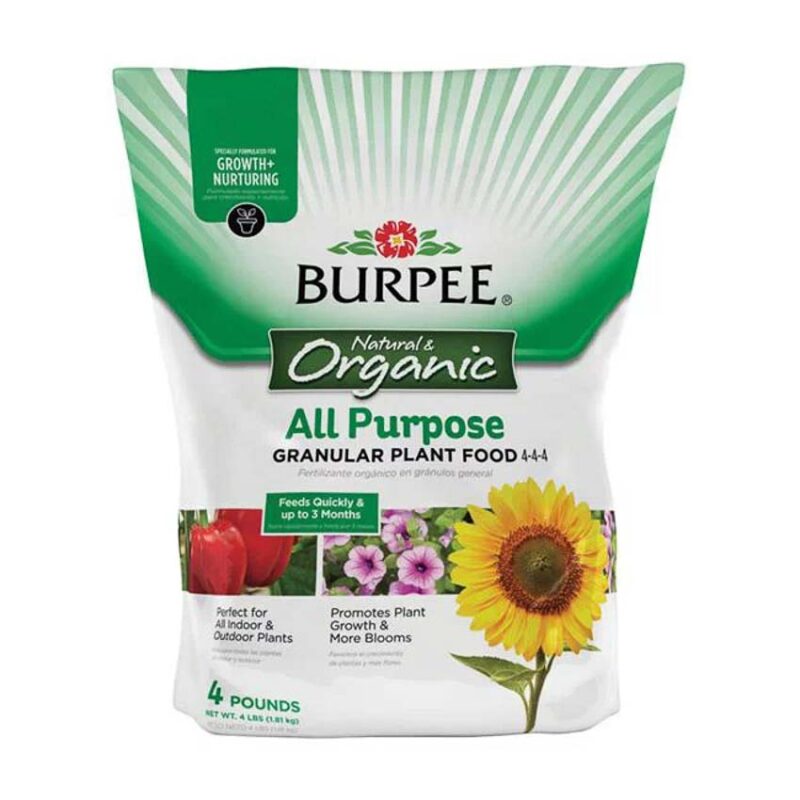
You can also try granular Espoma Organic Chicken Manure, which comes in a 25-pound bag with an N-P-K of 5-3-2.
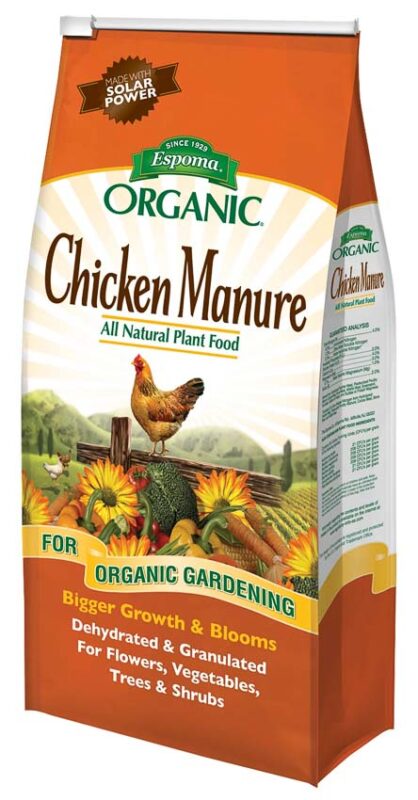
How to Choose the Right One For Your Needs
To choose the best fertilizer for your lawn and garden, consider the four Rs of nutrient management.
- Right rate
- Right source
- Right place
- Right timing
Your lawn and garden plants have different needs at different times of the year. Understanding how to fertilize your lawn before choosing a fertilizer is important. Then, it’s easier to match the N-P-K of the fertilizer with the needs of your plants.
Use this mnemonic device to remember how the primary nutrients of fertilizers work:
“Up, Down, and All Around”
- Up–(N) nitrogen–Supports green leaf growth
- Down–(P) phosphorus–Encourages strong root development
- All Around–(K) potassium–Benefits your plants all around
How to Use Organic Fertilizer
If you’re comfortable using synthetic fertilizers, it might feel strange to start using organics. However, it’s quite easy to use organic fertilizers, and you won’t have to apply them as often.
Application Rates and Frequency
In general, organic fertilizers are slower-acting than synthetic fertilizers, and annual applications are usually more than adequate. If necessary, you can boost heavy-feeding plants or fast-growing lawns throughout the season with liquid organic fertilizers.
Since the nutrient ratios of organic fertilizers vary, it’s important to follow the instructions on the packaging. Many companies have more information on their websites to assist you with application rates.
Tips for Properly Applying Organic Fertilizer
The fertilizer you choose and how you apply it should be determined by the size of your lawn and garden.
Granular fertilizers distributed with wheeled or tow-behind broadcast spreaders are the best option for large areas. If you have a small patch of lawn, you can easily apply organic fertilizers by hand. Even though you’re using a safe product, it’s still smart to wear gloves and a dust mask when you’re applying organic fertilizer.
Use a water hose-end sprayer or a pump sprayer to apply liquid fertilizers, and follow the directions on the package to ensure the proper rate. Plants can more easily absorb the nutrients in liquid organic fertilizers when you use a surfactant like Simple Grow Solutions Liquid Surfactant.
Apply the liquid fertilizer with added surfactant directly on the plant leaves. Surfactants reduce the tension of the nutrient formula and make liquid fertilizers more effective.
Incorporating Organic Fertilizer into Your Lawn and Garden Care Routine
Once you make the decision to build healthy soil with organic fertilizers, it’s easy to make the switch.
The next time you need to fertilize your lawn, choose an organic fertilizer. The results will surprise you, and since you don’t need to apply it as often, your pocketbook will love it, too.
FAQs About Organic Fertilizer
Can I make my own organic fertilizer?
You can DIY organic fertilizers by making your own compost from leaves, animal manure, and kitchen food scraps. It’s also easy to make manure tea when your plants need a quick boost of nutrients.
Is organic fertilizer safe for pets and children?
One of the most significant benefits of organic fertilizer is that it is safer for pets and children than synthetic fertilizers. However, it’s still not safe to ingest or play with.
The best practice is to keep pets and children off the lawn for at least 24 hours after applying organic fertilizers.
How long does it take for organic fertilizer to show results?
The time it takes to see results from using an organic fertilizer depends on what type you use.
Like synthetic fertilizers, granular products are slower to release nutrients, while liquid fertilizers immediately make them available. If you spray a liquid fish emulsion on your lawn, you will see results within a few days, but if you use granular chicken manure, it will take two to six weeks.
Do organic fertilizers have an expiration date?
How long an organic fertilizer lasts depends on its ingredients.
While some master gardeners suggest that organic fertilizers have a maximum shelf life of five years, it’s possible that they can last longer. However, if they contain microbes, they can lose their effectiveness in less than a year.

